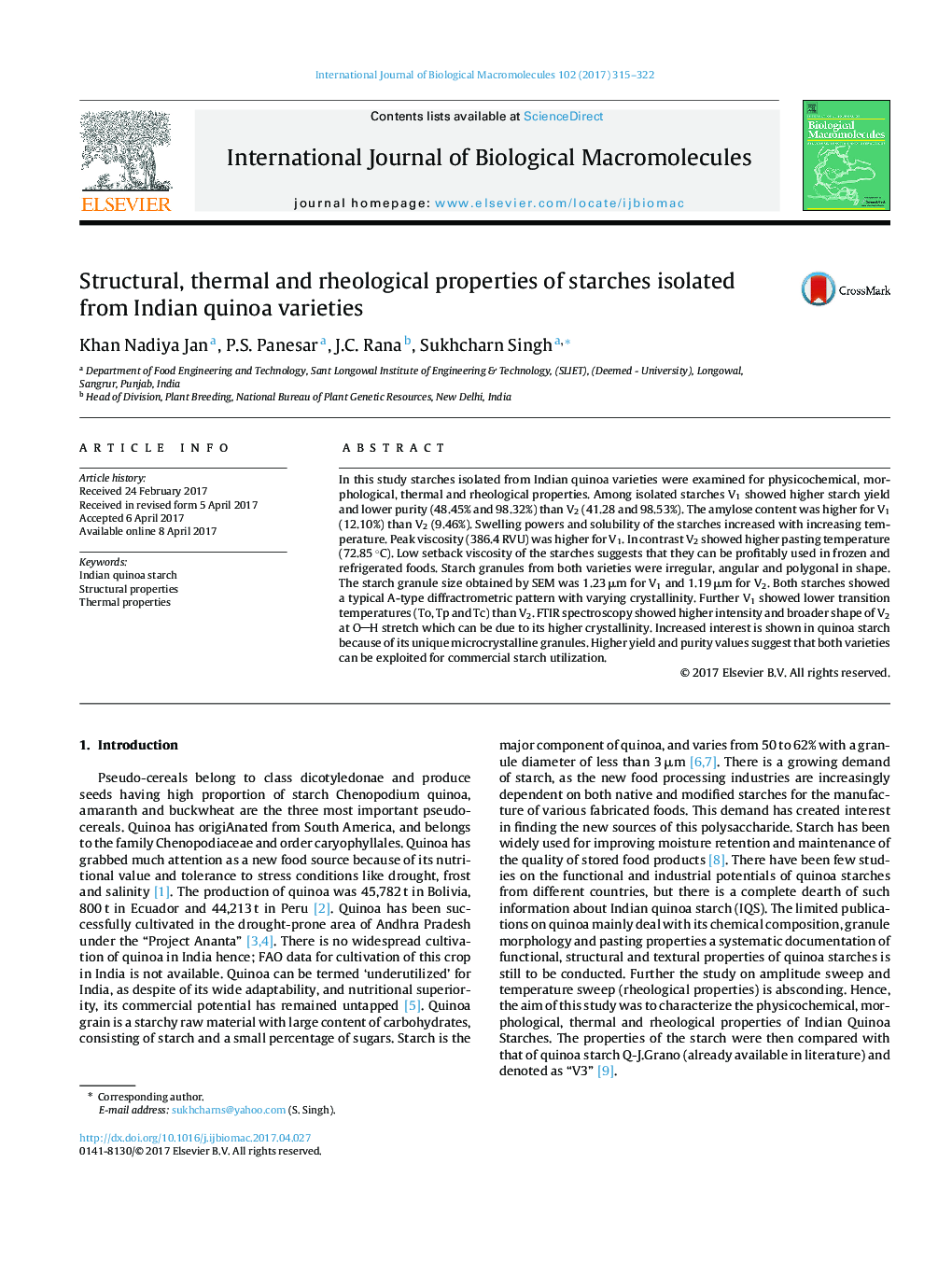| Article ID | Journal | Published Year | Pages | File Type |
|---|---|---|---|---|
| 5511756 | International Journal of Biological Macromolecules | 2017 | 8 Pages |
â¢Different properties of starches from Indian quinoa varieties were characterized.â¢Starches exhibited similar shapes, A-type crystal, low breakdown and setback.â¢Starches differed significantly in amylose, pasting, rheological and thermal properties.â¢Starches showed unique visco-elastic behaviour (High G'), may be used as thickener.â¢May be used in biodegradable films and in value added products (noodles).
In this study starches isolated from Indian quinoa varieties were examined for physicochemical, morphological, thermal and rheological properties. Among isolated starches V1 showed higher starch yield and lower purity (48.45% and 98.32%) than V2 (41.28 and 98.53%). The amylose content was higher for V1 (12.10%) than V2 (9.46%). Swelling powers and solubility of the starches increased with increasing temperature. Peak viscosity (386.4 RVU) was higher for V1. In contrast V2 showed higher pasting temperature (72.85 °C). Low setback viscosity of the starches suggests that they can be profitably used in frozen and refrigerated foods. Starch granules from both varieties were irregular, angular and polygonal in shape. The starch granule size obtained by SEM was 1.23 μm for V1 and 1.19 μm for V2. Both starches showed a typical A-type diffractrometric pattern with varying crystallinity. Further V1 showed lower transition temperatures (To, Tp and Tc) than V2. FTIR spectroscopy showed higher intensity and broader shape of V2 at OH stretch which can be due to its higher crystallinity. Increased interest is shown in quinoa starch because of its unique microcrystalline granules. Higher yield and purity values suggest that both varieties can be exploited for commercial starch utilization.
